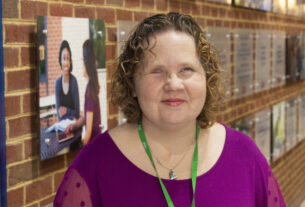
Community Concerns: Mental Health
Joe Fowler, staff writer
Several local mental health professionals spoke about the state of mental health treatment during September and October in a series of interviews and email exchanges. They told stories of both struggle and hope. Though statistics and research have their place in the discussion, the most compelling depiction of the current state of mental health care seems to stem from the experience of the afflicted and those who treat them.
Most of the professionals interviewed work, or have worked, at Region 10 Community Services Board (Region 10 CSB), a recovery center for those who suffer from mental health and substance abuse issues. Both former employees and clients of the CSB spoke of their experiences in other areas involving mental health and the treatment of mental illness.
One of the first matters discussed pertained to the availability of treatment. Dr. Amber Yoder, a psychiatrist with Region 10 CSB, said, “Sometimes folks are not receiving treatment because it’s challenging for them to access it for one reason or another, which is frustrating.” However, Yoder said that she thought ease of access was improving overall.
Yoder pointed out the development of a program that grants free psychiatric care to inmates just leaving incarceration while they fall under supervision from the department of probation and parole. Yet Yoder maintains that “there is always room for improvement.”
Ryan Senator, a mental health counseling resident at Region 10, agrees with Yoder on the problems involving ease of access but seemed far less excited about court ordered programs. Senator pointed out that some of Region 10’s services stem from the agency’s involvement with organizations such as Probation and Parole and drug court.
“One of the main problems with clients seeking treatment from legal sources is that there’s nothing to inspire them to keep receiving treatment,” he said, speaking of the frequency with which court-ordered cases lapse back into negative behaviors upon their discharge from Region 10.
Dr. Ruel Tyer, who has a Ph.D in counseling, talked more directly about the services at Region 10. Tyer once worked as a counselor at Region 10 before starting his own practice over a year ago.
Tyer explained that Region 10 receives little of its funding from the government but instead relies on contracts with entities such as social security and drug court. Region 10’s partners request certain services, and Region 10 adheres to the requests in order to make their budget. Tyer said that Region 10’s services are still based in part on personal assessments of client needs and not solely on the basis of institutions that have less understanding of the client on a personal level.
When describing his work in the private sector, Tyer explained that services are based solely on client needs. His funding comes from clients, rather than a salary like the one he received when working for Region 10.
Both Tyer and Yoder spoke of their struggles as mental health professionals. Along with some of the challenges already discussed, Yoder spoke of clients who lose touch with the treatment community, saying, “Sometimes folks lack the insight needed to stay in treatment, which can be common with mental illness and addiction, and fall out of touch.”
Tyer spoke of more of the frustrations associated with working at Region 10. According to Tyer, the CSB refers clients to therapy and generally with a 10 – 12 session limit based on policy that is more geared for acute care rather than ongoing treatment. The practice often leaves the therapist with the dilemma of providing the best possible care in a limited amount of time.
Tyer also addressed the over-prescribing of psychotropic medications by Primary Care Physicians (PCPs). He detailed the case of a person who had lost a family member.
The individual’s PCP diagnosed the patient with depression and prescribed anti-depressant medication. The individual became a client under Tyer’s care. Tyer explained that the PCP had not administered an assessment for clinical depression. Tyer did. The client met little of the criteria for clinical depression and certainly not enough to warrant anti-depressant medication. Tyer suggested therapy and grief counseling over a medication that could alter the client’s brain chemistry.
Both doctors spoke of their successes in a more intangible sense than their struggles. “Success is dependent on the client sitting across from me,” said Tyer. “I can’t take credit.” Yoder echoed this statement, saying, “I enjoy being able to develop a relationship with the people I work with and to see them get better.” Tyer mentioned a statistic confirming Yoder’s sentiment, saying that “40 to 60 percent of success is based on the relationship with the client.”
Yoder also spoke of another struggle in treating mental illness. “People don’t always get better, for a myriad of reasons. Sometimes folks have chronic illness and the job becomes helping them live with the illness in the best way possible.”
One such individual, Max Eshleman, spoke about his experience with mental illness. Eshleman’s diagnosis is bipolar with schizoaffective disorder. Eshleman is both a client of Region 10 and a former employee. He described his symptoms as “Mood swings, bouts of depression, severe anxiety and agitation and aggression when symptoms were bad.” He first sought treatment in 1994 in Philadelphia. “It took a couple years in and out of psych wards to really gain any stability.”
Eshleman moved to Virginia in 1994 and received treatment from Region 10 almost immediately by moving in with his sister and using her address to establish residency in the service area.
“It was much easier to get in then. They’re just overwhelmed now.” Region 10 also granted Eshleman employment at a dual recovery center, where he worked for years until he had an extremely bad flare up of his illness that led to a violent encounter with another employee at the center.
After losing his position, Eshleman continued receiving treatment at Region 10. Among the services Region 10 has provided him, Eshleman lists housing assistance, general case management and counseling. “It took several years to receive treatment in increments,” Eshleman said.
Though he reports having depressive episodes every couple of weeks, Eshleman describes himself as high functioning, easy to get along with, well-adjusted and satisfied, though his next episode is more a fact than a possibility.
Susan Hannifan, PVCC’s Disability Services Counselor, spoke on the treatment of the mentally ill as well. Though she gladly serves as an advocate for students with mental health troubles, the Virginia Community College System (VCCS) does not provide counseling centers, nor does it provide psychological services for its students. However, Hannifan explained that the VCCS is considering these services in light of the increase in school shootings nationwide.
“My main caseload are students with hearing disabilities and mental health problems,” she said. Outside of advocacy, Hannifan stated that her job is to educate the staff that these cases exist whether or not the student displays obvious signs of mental illness.
Though there appears to be a great deal of hope about the future of mental health care, there still seems to be a great deal of challenges to overcome before that hope becomes a reality. The stories of professionals and sufferers alike can explain much about mental illness in general.
One of those voices spoke out more directly than the others about the biggest challenge facing mental health treatment on a local, state and nationwide level.
Dr. Tyer stated his perspective: “The government doesn’t view mental health issues as a big enough problem to put money into.”







